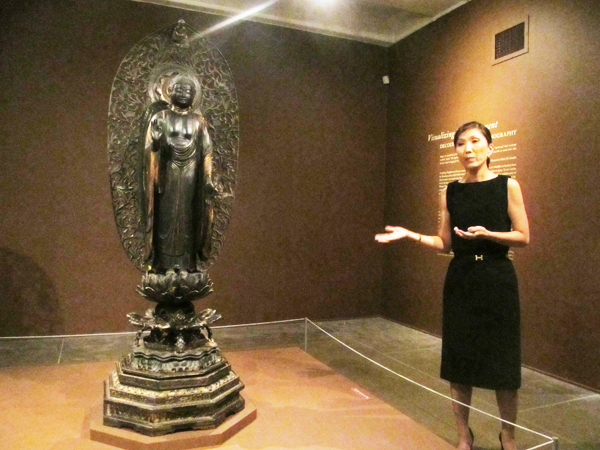2015 / Visualizing Enlightenment: Decoding Buddhist Iconography, Mar 20 – Aug 02
USC Pacific Asia Museum in Pasadena
March 20 – August 2

Amida Buddha, Japan, Kamakura Period (1185-1333): First half of the 13th century, Wood, lacquer, gilt and pigments, Gift of Sharon Pierce in loving memory of her son, J. Christopher Johnson. Conservation funds provided by Sharon Pierce and the Collectors’ Circle, Pacific Asia Museum.
Visualizing Enlightenment presents exceptional Amida Buddha in USC Pacific Asia Museum’s collection from the Kamakura period (1185-1333) in Japan. At over six-feet tall, Amida Buddha is a rare example of large-scale sculpture from the period, and was executed using the yosegi technique, in which a single image is carved from multiple pieces of wood and then joined together from the inside.
Buddhist art comprises a tremendous range of objects from paintings to sculpture to ritual objects. Amida Buddha served as a powerful pedagogical tool to help devotees visualize the teachings and philosophical ideas of the religion.
Amida Buddha, meaning “Limitless Light” in Sanskrit, is the Buddha of the western Pure Land sect in East Asia. It is one of the most widely worshipped Buddhas in the Mahayana tradition due to a doctrine that assured salvation to commoners.
With this prime example of Amida Buddha from the 13th century, this intimate exhibition in the Focus Gallery aims to explain some of the most common iconography of Buddhist art.
The presentation of Visualizing Enlightenment is made possible by Stephen O. Lesser. Major support of Visualizing Enlightenment came from East West Bank, Peter Pan, Eva & Ming Hsieh and Joan Payden of Payden & Rygel. Generous support of the exhibitions came from Margaret Leong Checca with Gayle & Ed Roski of Majestic Realty Co.
Additional support is provided by Joan Travis, Singpoli Capital, David Kamansky, Sun Yin USA, Jipan Yan, Arrow Recovery Group and Esense Beauty. In-kind media support is provided by KPCC.
USC Pacific Asia Museum is located at 46 North Los Robles Ave, Pasadena, CA 91101. Open Wednesday – Sunday, 10 am – 6 pm. http://pacificasiamuseum.usc.edu